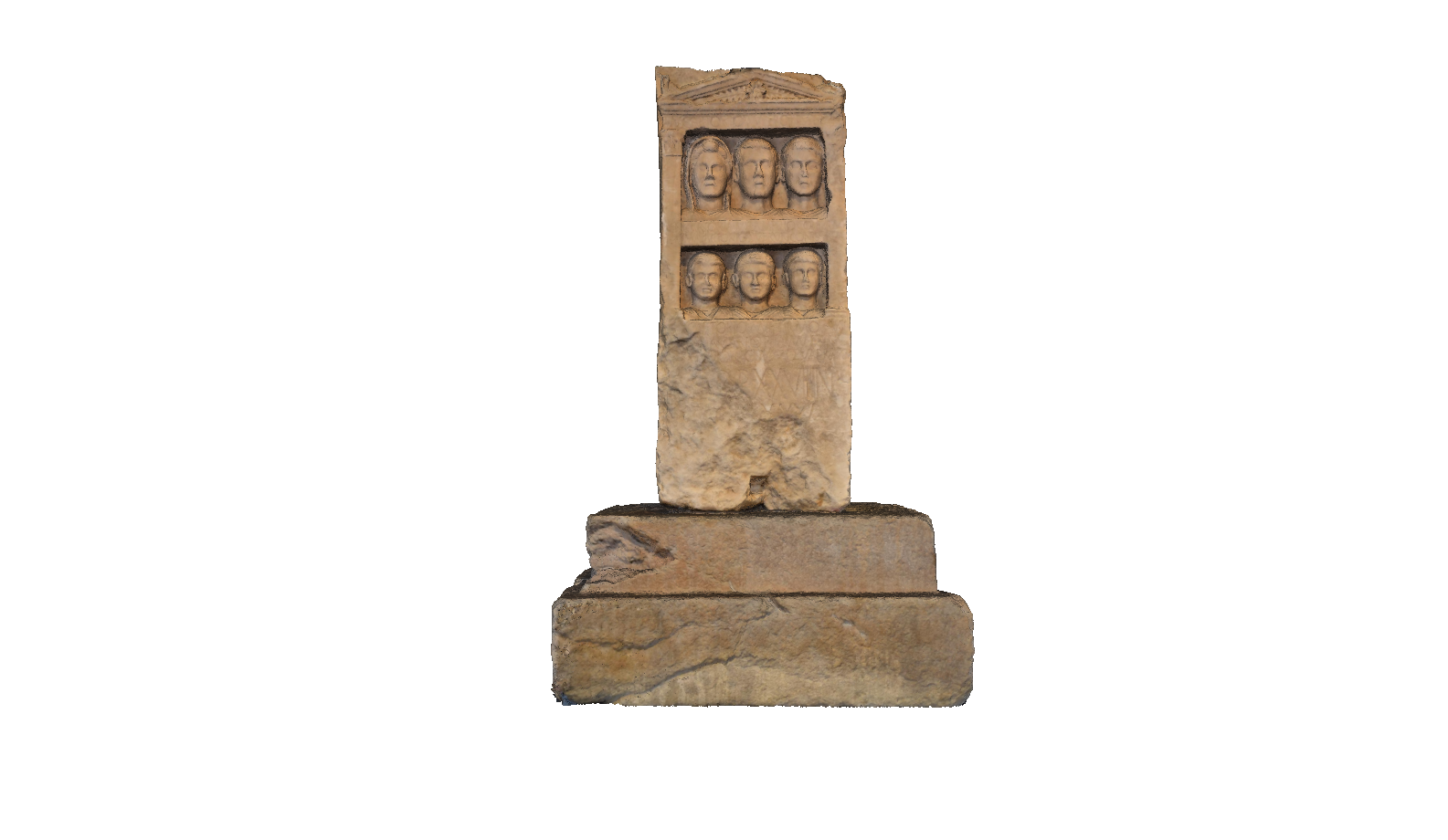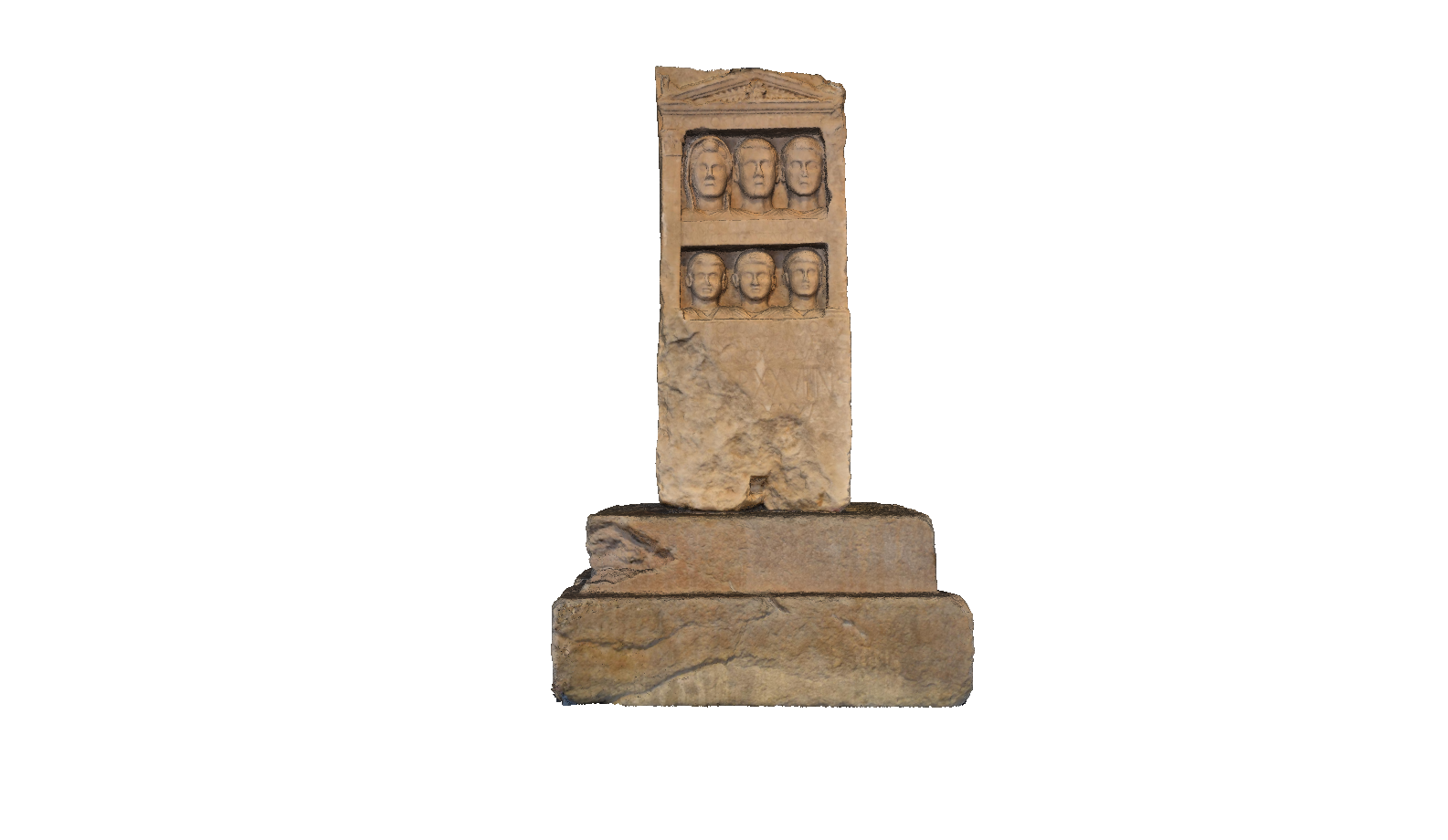Description
Click on the image to go full screen
This monument, made of trachyte at the end of the 1st century B.C., was found in the area of the railway station in 1877-78 and immediately entered the museum's lapidary collection.
From a stylistic point of view, the stele recalls the Hellenistic naiskos: a type of funerary monument that imitates an architectural structure with two pillars with Corinthian capitals and a pediment, occupied by a six-petalled rose with two acanthus leaves on the sides. In the space between the two false pillars, two deep box-shaped niches can be recognised, within which portraits of the deceased are made, for a total of six busts arranged in groups of three. These are a couple with their four children, whom the inscription indicates as belonging to the gens Cartoria. The first to be represented in the top right-hand corner is Cartoria Ampelione, the patron of the stele, with her head veiled; next to her there are her husband Manio Cartorio and her eldest son Manio Cartorio Runcone; their daughter Cartoria and two other sons, Cartorio Eros and Cartorio Quadrato, are shown in the frame below. The female portraits are characterised by hairstyles that follow the fashion (and prominent women) of the period: in the case of the mother 'all'Ottavia' while for the daughter 'all'Antonia'; the male portraits show short hair, rendered with simple streaks. The equal onomastics should not be surprising: the couple were freedmen (freed slaves) of the same owner Manio Cartorio and therefore took his name, passing it on to all their children.
The name of the gens is known in the area because it is linked to the production of bricks. This connection is possible thanks to the stamps - the 'trademarks' of the workshops - stamped on the products during manufacture (a brick with the Cartorii stamp is on display in the Museum) and is a very interesting element: it is indeed not often possible to trace a production workshop back to the family that owned it.

